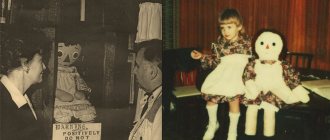Dysgraphia is a written language disorder. Signs and symptoms of deviation, treatment and methods of prevention - what parents of schoolchildren should know.
Children who have just started learning to write try to write neatly. However, the handwriting of most primary school children is clumsy and illegible. Many people write with errors because they do not yet know the basic rules of the Russian language. A child's written speech improves over time, but some children continue to write sloppily, changing letters in places, missing spaces and in the right places. There are a number of signs that should cause parents to become concerned and take their child to see a speech therapist, as they may be symptoms of dysgraphia.
Timely treatment of this disorder is the key to the fact that the child will have competent written speech in the future. That is why it is important to know what dysgraphia is, what its causes and main symptoms are, as well as how this deviation is treated.
Dysgraphia: general information
Dysgraphia is a writing disorder that involves crooked letter writing with multiple misspellings of words. The handwriting of a child with this disorder is illegible, and words may be written in reverse with a large number of grammatical errors. This defect is a consequence of disruption of certain parts of the brain.
Writing impairment, the causes of which lie in the improper functioning of certain parts of the brain, occurs in many children who are beginning to learn the basics of writing. Thus, among second grade students, on average, such a violation occurs in more than half of the class. In the absence of timely treatment, such a deviation entails a decrease in the child’s self-esteem, affects his academic performance, and affects relationships with peers.
Dysgraphia is often accompanied by minor problems with the speech apparatus. This violation has several types and is classified according to severity.
The connection between oral and written speech
Developed oral speech is of great importance for the successful development of writing. In order for a word to be written correctly, the child must hear all the sounds it contains and, after analyzing them, select the desired letter.
Impaired phonemic hearing, which accompanies various delays in speech development, does not make it possible to write words correctly. Incorrect pronunciation of sounds affects their correct understanding and analysis. In cases of more serious hearing impairment, a teacher of the deaf will help you.
In order to master writing, a coordinated development of phonemic hearing, speech, and visual perception of letters is necessary.
In addition, other aspects have a great influence on the formation of written speech. As you know, the left hemisphere is “responsible” for oral speech. Subject symbols and images are the responsibility of the right hemisphere.
The timely development of interhemispheric connections and the formation of the activity of each hemisphere ensure the development of written speech. That is why manifestations of dysgraphia are quite often found in left-handers.
Mechanism of occurrence, causes
Writing is a process that requires the coordinated work of the visual, auditory, speech and motor systems. By the time the child masters the basics of writing, he should have mastered oral speech well. If the lateralization of brain functions is not carried out as needed, then a disorder such as dysgraphia develops. Usually these processes are normalized by the time the child begins school.
If the delay in lateralization causes disturbances in a part of the brain, the child develops dysgraphia, which requires correction. Otherwise, the deviation may affect the child’s thinking, memory, and perception.
Causes of occurrence in children
Dysgraphia can be caused by birth trauma. The development of such deviations is provoked by various infectious diseases and improper upbringing. Also, experts do not exclude such a factor as genetic predisposition.
Dysgraphia in children may be accompanied by other concomitant diseases that were previously diagnosed.
Causes of occurrence in adults
In adults, imperfections in written speech can be caused by both internal and external factors. Main reasons for deviation:
- presence of a tumor in the brain;
- low saturation;
- stroke;
- previous brain surgery;
- poor social conditions.
Social factors include insufficient upbringing in childhood, incorrect speech of people around, and lack of communication with others.
With dysgraphia, errors in the process of writing are persistent, despite the fact that the person knows well all the rules of writing words.
Types of dysgraphia
Dysgraphia can be the result of various reasons. Signs and symptoms of the disorder may vary. The method of rehabilitation and duration of treatment also depend on the type of deviation.
Optical
It is difficult for a child to write letters correctly; he may skip them when writing words, or add unnecessary elements in the form of strokes and sticks. Due to incompletely formed visual-spatial connections, the child often misses letters, writes them incorrectly, and confuses them with others.
Acoustic
Characterized by a lack of ability to correctly recognize sounds. The patient confuses similar-sounding letters and may make mistakes in the degree of softness of the pronounced sounds.
Articulatory-acoustic
The child writes and pronounces letters incorrectly and replaces them with similar sounds. Requests from parents and teachers to pay attention to the correct pronunciation and spelling do not bring results. With this form of disorder, work aimed at auditory differentiation of the child is required. Only by carrying out such corrective work is it possible to completely get rid of the problem.
Ungrammatical
This type of violation is characterized by the fact that the child, when pronouncing and writing, confuses case endings, misses or replaces prepositions with others. This deviation is a consequence of speech disorders.
Disorder caused by defective processes of analysis and synthesis
The main symptoms of this disorder are omitting or replacing letters with others, adding extra syllables, and spelling several words in a row. Such a deviation is preceded by social, psychological, and educational factors, which become the main cause of disturbances in the analysis and synthesis of speech.
Signs of the disease
Dysgraphia is a diagnosis that should be made by a specialist. The deviation can easily be confused with a common misunderstanding of grammar that occurs in most children. With dysgraphia, the mistakes that a child makes while writing are in no way related to the level of knowledge of the Russian language. The teacher at school, as well as the student’s parents, should be wary if the child repeatedly makes the same mistakes: misses letters, confuses the combined and separate spelling of words. In addition, such a child’s handwriting is illegible, and the size of the letters constantly changes from small to large, not only in one sentence, but also in one word. The writing speed is very slow. Often, children with dysgraphia are given poor grades due to mistakes and poor handwriting, which greatly affects the child’s academic performance and self-esteem. That is why it is very important to promptly identify a violation of written speech in a child, find out the cause of the deviation in order to undergo a course of correction.
Article:
The variety of pathogenetic factors and different mechanisms of impairment of written speech indicates the complexity of the problem under consideration; this explains the creation by researchers of many classifications of dysgraphia.
The terminology used by the authors is very diverse, but the content of the concepts largely coincides. So, A.N. Kornev (2003) believes that the taxonomy of dysgraphia is not sufficiently developed and is represented mainly by its pedagogical variants. I.N. Sadovnikova (1993) believes that any classification is only viable when it becomes a “working tool.”
There are several classifications of childhood dysgraphia, reflecting the different state of science at the time of their development, and also indicating a different understanding by the authors of the mechanisms of this disorder (M. E. Khvattsev, 50s of the 20th century; O.A. Tokareva, 60s; R.I. Lalaeva and staff of the Department of Speech Therapy of the Russian State Pedagogical University named after A.I. Herzen, 70-80s; A.N. Kornev, 90s, T.V. Akhutina, beginning of the 21st century).
Thus, from the position of a psychophysiological approach, dysgraphia is considered as a consequence of a violation of the analytical and synthetic activity of analyzers (S.S. Lyapidevsky, 1953; O.A. Tokareva, 1971). Characterizing the causes and mechanisms of dysgraphia, scientists say that the primary underdevelopment of analyzers and inter-analyzer connections leads to insufficient analysis and synthesis of multimodal perceptual information, a violation of the recoding of sensory information from one modality to another, for example, the translation of sounds into letters. To master writing, a child must master graphic images of letters and be able to correlate them with the corresponding acoustic and speech motor (articulatory) characteristics. He must have developed the skills of sound and kinesthetic analysis, developed the processes of visual-spatial perception, the psychophysiological basis of which is both the full development of analyzers and the establishment of coordinated connections between them.
The degree of insufficiency of interanalyzer connections correlates with the degree and nature of difficulties in mastering written speech, and the predominant impairment of one or another analyzer allowed researchers to identify the corresponding types of dysgraphia: motor, acoustic and optical. These species are described in most detail in the work of O.A. Tokareva (1969).
Acoustic dysgraphia is associated with insufficient phonemic hearing, in which the differentiation of phonemes suffers and the establishment of correct sound-letter correspondences is impaired. With this type of dysgraphia in children, there is also an inferiority of the operations of sound analysis and synthesis, as a result of which in the writing of children with acoustic dysgraphia, in addition to mixtures of letters corresponding to acoustically close sounds, omissions and rearrangements of letters are observed.
Motor dysgraphia is caused by defective activity of the motor analyzer, which is accompanied by the development of pathological inertia in the formation of motor stereotypes. As a result, children have difficulty moving their hands while writing and do not develop motor formulas for letters. The insufficiency of the motor analyzer can also affect the quality of pronunciation of the recorded word, which the child relies on to clarify its sound composition. In addition, weakness of the motor analyzer can negatively affect the activity of the acoustic analyzer, which is closely associated with it in the implementation of the writing process.
Optical dysgraphia is associated with underdevelopment of the visual systems of the cerebral cortex in children. The inferiority of the optical analyzer can manifest itself in a violation of holistic perception, differentiated visual representations, and visual memory. As a result, children have difficulty remembering and recognizing letters. In writing, they mix up optically similar letters, incorrectly arrange letter elements in space, or confuse their numbers.
Modern psychological and psycholinguistic studies of the writing process indicate that it is a complex form of speech activity, including a large number of operations at various levels: semantic, linguistic, sensorimotor. In this regard, the identification of types of dysgraphia based on violations of the analytical level is currently insufficiently substantiated.
Classification of dysgraphia M.E. Khvattseva (1959) was developed from the position of psychophysiological analysis of the mechanisms of writing disorders. Characterizing this or that type of dysgraphia, the scientist considered not only the psychophysiological mechanisms of the disorder, but also the corresponding disorders of speech function and language operations of the writing process.
It should be noted that R.E. Levin (1940) and M.E. Khvattsev (1959) were one of the first researchers who associated dysgraphia primarily with insufficient language development in children.
M.E. Khvattsev identified five types of dysgraphia, two of which - dysgraphia due to oral speech disorders (tongue-tied writing) and optical dysgraphia - are also present in the modern classification.
Dysgraphia due to oral speech disorders (“graphic tongue-tied”). According to M.E. Khvattsev, it arises due to incorrect sound pronunciation. The replacement of some sounds with others, the absence of sounds in pronunciation cause corresponding replacements and omissions of letters in the letter.
Optical dysgraphia. This form of dysgraphia, according to M.E. Khvattsev, is caused by a violation or underdevelopment of the optical speech systems in the brain, while the formation of the visual image of a letter or word is disrupted. With literal dysgraphia, the child’s visual image of the letter is disrupted, distortions and substitutions of isolated letters are observed. In verbal dysgraphia, the writing of isolated letters is intact, but it is difficult to form a visual image of a word with gross errors. With optical dysgraphia, the child does not distinguish graphically similar handwritten letters: p-n, p-i, s-p, s-o, i-sh, l-m.
Dysgraphia due to a violation of the pronunciation rhythm of M.E. Khvattsev associated it with the insufficient development of the sense of auditory-verbal rhythm, which negatively affects both oral speech and writing. With this disorder, children miss vowels and syllables and do not complete the endings of words. According to modern ideas, the identification of this type of dysgraphia is not legitimate, since the rhythmic structure is an elementary function, and in the case of dysgraphia it is customary to talk about a violation of higher mental functions. In addition, these errors can be caused either by underdevelopment of phonemic analysis and synthesis, or by distortions of the sound-syllable structure of the word.
The cause of dysgraphia due to acoustic agnosia M.E. Khvattsev saw the undifferentiation of auditory perceptions of the sound composition of words and the insufficiency of phonemic analysis. In children's writing, this manifests itself in letter substitutions corresponding to oppositional sounds and distortions in the structure of words and sentences. The existing difficulties in auditory differentiation of sounds lead to the fact that letters are not recognized by the child and the grapheme does not correlate with a specific speech sound.
Dysgraphia in motor and sensory aphasia is observed in cases of organic brain damage of the corresponding localization and is combined with oral speech disorders. It is characterized by disorders of the analysis and synthesis of the structure of words and sentences that are specific to each variant of this dysgraphia.
M.E. Khvattsev was one of the first to characterize the phenomenon of agrammatism, which can be observed not only in oral speech, but also in writing.
It should be noted that the classification of M.E. Khvattseva is currently not used in the practical activities of speech therapists, but its role in the development of the doctrine of childhood dysgraphia is very great. The theoretical concepts of dysgraphia as a speech disorder, developed by him, underlie modern speech therapy classifications of reading and writing disorders in children.
From the perspective of a clinical-psychological (medical-psychological) approach, dysgraphia is often considered not as an independent disorder, but as one of the symptoms included in a complex of other, mainly neurological or encephalopathic disorders (S.S. Mnukhin, A.N. Kornev). The causes and symptoms of dysgraphia are associated primarily with the phenomena of underdevelopment and damage to the central nervous system, manifested in neurodynamic disorders and partial deficiency of higher mental functions, in the functional insufficiency of their higher forms of regulation. In this regard, many authors point out that disorders of written speech are most often found in the syndrome of minimal brain dysfunction, with delay or other disorders of mental development.
So, A.N. Kornev (2003), considering dysgraphia from the perspective of a clinical-psychological approach and characterizing its possible variants, highlights not only the corresponding errors in children’s writing, but also the symptoms of clinical disorders that cause and accompany one or another variant of writing impairment. Clinical and neuropsychological studies allowed the scientist to identify uneven mental development in children with written speech disorders and to determine that different types of dysgraphia are accompanied in children by disorders of neuropsychic activity of varying degrees of severity and combinations. The author identifies dysphonological dysgraphia (parallel and phonemic), associated with a violation of language operations; dysgraphia, caused by a violation of language analysis and synthesis, dyspraxic dysgraphia, caused by a violation of the formation of graphomotor skills in children.
The Paralaline variant of dysgraphia (a reflection of pronunciation defects in writing) manifests itself in the form of mixtures of letters, violations of the reproduction of the sound-syllable structure of words in writing. The clinical symptoms of this type of dysgraphia in most cases are represented by the syndrome of complicated mental infantilism. Against the background of emotional lability, children exhibit manifestations of cerebrospinal gravis, increased distractibility, and weakness of voluntary concentration and volitional processes. The intellectual sphere of children is characterized by pronounced unevenness. Verbal-logical abilities are significantly lower than non-verbal ones. Among the prerequisites for intelligence in children, successive functions and fine finger motor skills suffer.
Phonemic dysgraphia is accompanied by persistent errors in the form of confusion of letters corresponding to oppositional consonants that are similar in acoustic-articulatory characteristics. Omissions of letters are also possible in children's writing. Oral speech is not impaired. This type of dysgraphia is based, according to A.N. Kornev, lies in the imperfection of phonemic representations, the weak formation of phonemic analysis, which negatively affects the selectivity of phoneme-grapheme choice. Clinical symptoms manifest themselves in low mental performance, difficulty concentrating and distributing attention. The intellectual development of children ranges from the lower limit of normal to borderline mental retardation. Verbal-logical abilities suffer to a much greater extent than non-verbal ones. Of the prerequisites for intelligence, the most imperfect are the successive functions that ensure discrimination, memorization and reproduction of temporal sequences of stimuli, actions or symbols.
Dysgraphia caused by a violation of language analysis and synthesis, A.N. Kornev classifies them as metalinguistic. Children with this type of dysgraphia suffer not from linguistic (phonological), but from metalinguistic processes: operations associated with the awareness of the basic linguistic units of speech division (sentence, word, syllable, sound) and the analysis of oral utterances into these conventional units. This type of dysgraphia, according to the author’s observations, is the most common. In children's writing there are numerous omissions and rearrangements of letters and syllables, the division of the text into sentences (dots and capital letters are missing) and sentences into words is impaired. Continuous spellings of words and separate spellings of parts of words are possible. This variant of dysgraphia is based on the immaturity of the skills of analysis and synthesis, which is one of the forms of intellectual activity. Mastering this skill depends both on the level of linguistic maturity and on the state of prerequisites for intelligence and intellectual abilities. Clinical research reveals immaturity of intellectual abilities in children with this variant of dysgraphia, sometimes reaching the level of borderline mental retardation. The inferiority of the preconditions of intelligence is manifested in a violation of voluntary concentration and switching of attention, a violation of dynamic praxis.
Dyspraxic dysgraphia manifests itself as the inability to master the graphic image of letters. Children's writing contains errors in the form of substitutions of letters that are similar in design or have the same elements, and underwriting of letter elements is observed. Children with this type of writing disorder slowly develop a stable motor formula for letters; they are characterized by uneven handwriting and a slow pace of writing. The clinical characteristics of children indicate a violation of finger praxis, difficulties in the dynamic organization of movements (inertia in switching). Children's nonverbal intellectual abilities are generally lower than their verbal ones.
Currently, within the framework of neuropsychology, attempts are also being made to present a classification of various types of writing disorders. For example, T.V. Akhutina (2001), from the perspective of a neuropsychological approach, identified variants of writing difficulties that are often encountered in children, but the mechanisms of which are rarely discussed in speech therapy (pedagogical) literature. In particular, the author identified writing difficulties of the type of regulatory dysgraphia, caused by the immaturity of voluntary regulation of actions (planning and control functions). Thus, children with these disorders have problems with maintaining voluntary attention, difficulties in orienting themselves to a task, inclusion in a task, impulsive decisions and inertia, and difficulties in switching from one task to another. The letter is characterized by errors in simplifying the program, such as pathological inertia. These include: inert repetition (perseveration) of letters, syllables, words, types of tasks; omissions of letters and syllables; anticipation (anticipation) of letters and sticking together (contamination) of words. Children with regulatory dysgraphia are characterized by difficulties in language analysis, which are a clear manifestation of decreased orienting activity. The inability to distribute attention between the technical side of writing and spelling rules leads to the fact that children do not follow the rules for writing capital letters, unstressed vowels, etc.
The second variant of writing violations, which is highlighted by T.V. Akhutin, is due to the difficulties of maintaining a working state and active tone of the cortex. At the same time, children experience increased fatigue and fluctuations in performance - the level of performance changes during the quarter, week, day, lesson. Usually these children do not immediately get involved in the task, and, having started it, quickly get tired; after some time, the working state returns, but at a reduced level, as a result of which the child gets tired again - lies down on the desk or slides off it. Against the background of fatigue, the child makes a variety of gross mistakes and, above all, those that are typical for children with difficulties in programming and control. Children write slowly, writing skills are automated with great difficulty, muscle tone may increase while writing, and it is difficult for the child to maintain a working posture. The size of the letters, pressure, and inclination fluctuate depending on fatigue.
The third option for the difficulties of writing to T.V. Akhutina defines it as visuospatial dysgraphia of the right hemisphere type. Visual-motor coordination, the ability to correlate movement with vertical and horizontal coordinates, the ability to combine into one whole and remember the general relative position of parts, that is, the perception of a holistic image, depend on the work of the right hemisphere.
Analyzing the writing difficulties of children with this type of dysgraphia, the author identified the characteristics that characterize them: – difficulty in orienting on a notebook sheet, in finding the beginning of a line, difficulties in holding a line; – constant fluctuations in the inclination and height of letters, mismatch of letter elements in size, separate spelling of letters in a word; – delays in updating the graphic and motor images of the desired letter, replacing visually similar and closely written letters (for example, K-N), replacing handwritten letters with printed ones, an unusual way of writing letters, especially capital ones; – stable specularity when writing letters 3, E, e, s; replacing the letters U-CH, d-b, d-c; – the impossibility of developing the skill of ideogram writing (“Class robot”, “keno” instead of “cinema”); – omissions and replacements of vowels, including stressed ones; – violation of the order of letters in a word; – a tendency towards “phonetic” writing (“joyfully” - “radsno”); – difficulties in isolating a holistic image of a word, as a result of which two words, as well as words with prepositions, are written together (later, due to the increased attention paid to the rule of writing prepositions, prefixes are written separately from the roots).
Highlighted features of T.V. Akhutina correlates it with one mechanism - the difficulties of handling spatial information and attempts to compensate for them.
Unlike the “right-hemisphere” ones, “left-hemisphere” difficulties in writing can manifest themselves in the substitution of letters corresponding to sounds that are similar in sound and pronunciation; in violations of programming and control. T.V. Akhutina emphasizes that the described difficulties in writing can be of varying degrees of severity, and they do not necessarily reach the level of severity expected in dysgraphia.
The author notes that errors that have the same external manifestations can have different natures and different mechanisms. Thus, the continuous spelling of words can be associated both with a lack of analysis of linguistic material (due to difficulties in programming and control) and with difficulties in forming a holistic image of the written word. To determine the mechanism of errors, it is necessary to take into account not individual errors, but the entire symptom complex of writing features. Moreover, a reliable conclusion about the mechanism of dysgraphia can be made by comparing the characteristics of writing with the state of other higher mental functions (T.V. Akhutina, 2001).
A.L. Sirotyuk (2003), relying on research by neuropsychologists regarding the complex brain organization of writing, identifies three leading types of writing disorders:
1) speech dysgraphia (motor and sensory), occurring in a syndrome of various forms of disorders;
2) non-speech dysgraphia (gnostic) - occurs in the syndrome of impaired perception: visual, spatial, optical-spatial;
3) dysgraphia as a violation (or lack of formation) of goal-directed behavior, its organization and control, lack of formation of motives.
As noted by E.A. Loginova (2004), psychophysiological, clinical-psychological and neuropsychological consideration of dysgraphia from the perspective of its nature (disturbances of brain mechanisms, disturbances in the formation and development of higher mental functions) are of great importance for elucidating the causes of this defect and its psychopathological mechanisms. Clinical and neuropsychological studies make it possible to expand the understanding of the symptoms of dysgraphia, not limiting it only to errors in writing, but also characterizing the characteristics of the mental organization of a child suffering from a writing disorder.
The understanding of childhood dysgraphia in accordance with the modern theory of speech therapy is reflected in its classification developed by the staff of the Department of Speech Therapy of the Russian State Pedagogical University named after. A.I. Herzen in the 70-80s of the XX century. L.G. took part in the creation of this classification. Paramonova, V.A. Kovshikov, R.I. Lalaeva, L.S. Volkova, G.A. Volkova and other scientists. From the point of view of the speech therapy approach, dysgraphia is understood primarily as a specific violation of language abilities, requiring special pedagogical correction methods. Speech therapy theory connects the causes of dysgraphia in children with the insufficiency of higher mental functions (speech and visual-spatial) that support the writing process, and the mechanism of the disorder with the inferiority of certain writing operations, mainly linguistic.
The understanding of dysgraphia as a speech disorder is due not only to the fact that writing is a type of speech activity, but also to the fact that, according to special (speech therapy) studies, in children of primary school age who do not have any special problems in sensorimotor and mental development, The most common is dysgraphia associated with the insufficiency of certain components of the speech functional system.
The connection between childhood dysgraphia and insufficient speech development or dysfunction of the speech system is reflected in four of the five types of this disorder identified by the pedagogical classification (R.I. Lalaeva, 1997).
Articulatory-acoustic dysgraphia can occur in children who have or have had problems with sound pronunciation. Defective pronunciation of sounds or, if it is overcome, residual inferiority of kinesthetic sensations and ideas cause difficulties for the child to differentiate the articulatory features of a sound and prevent its successful correlation with the corresponding letter. In children with this type of dysgraphia, speaking while writing, which is important for starting to learn to write, is not a full-fledged support for recognizing sounds and sound-letter structuring of words. As a result, in children's writing there are errors in the form of mixtures and omissions of letters.
Dysgraphia based on impaired phoneme recognition is associated with an insufficient level of functioning of the operations of the complex process of distinguishing and selecting phonemes. If any of the operations (auditory analysis, kinesthetic analysis, phoneme selection, auditory and kinesthetic control) are impaired, the entire process of phoneme recognition suffers. In children's writing, this manifests itself in the form of mixtures or even complete replacements of letters in the letter.
With dysgraphia due to a violation of language analysis and synthesis, different types of these complex operations may be defective: dividing a sentence into words and synthesizing a sentence from words, syllabic and phonemic analysis and synthesis. In writing, this dysgraphia manifests itself in distortions in the structure of words and sentences (omissions, rearrangements, additions of letters, syllables, words; merging or breaking words). Phonemic analysis is the most complex, therefore errors in the form of distortion of the sound-letter structure of words are the most common.
Agrammatic dysgraphia is associated with the underdevelopment of the lexical and grammatical structure of speech in children and the immaturity of morphological and syntactic generalizations. Errors with this dysgraphia can manifest themselves at the level of words, phrases, sentences and texts - a violation of semantic and grammatical connections between sentences; distortions of the morphological structure of words; violation of word agreement; distortions of prepositional-case constructions; omissions of members of sentences, etc. Agrammatic dysgraphia manifests itself most clearly towards the end of primary school, i.e. when the morphological principle of writing becomes more significant.
Optical dysgraphia is associated with underdevelopment of visual gnosis and mnesis, analysis and synthesis, and spatial concepts. In writing, it manifests itself in the form of substitutions of graphically similar letters, distortions in the writing of letters, and mirror writing.
Classification developed by specialists from the department of the Russian State Pedagogical University named after. A.I. Herzen, has become widespread in speech therapy practice, since considering the basic mechanisms and manifestations of language and optical disorders in children with dysgraphia, it allows us to correlate the types of dysgraphia with certain directions and correction methods well known to speech therapists. References: 1. Akhutina T.V. Writing difficulties and their neuropsychological diagnostics. // Writing and reading: learning difficulties and correction. - M.-Voronezh, 2001. - P.7-20. 2. Kornev A.N. Reading and writing disorders in children. - St. Petersburg: Rech, 2003 - 336 p. 3. Lalaeva R.I. Impairment of written speech. // Reader on speech therapy. / Ed. L.S. Volkova, V.I. Seliverstova. - M.: Vlados, 1997. - P.502-512. 4. Levina R.E. Disadvantages of reading and writing in children. - M.: Uchpedgiz, 1940. - 72 p. 5. Loginova E.A. Writing disorders. Tutorial. / Ed. Volkova L.S. - St. Petersburg: Detstvo-Press, 2004. - 208 p. 6. Lyapidevsky S.S. Dysgraphia in children and their pathophysiological analysis. // Educational work in special schools. Vol. No. 3. Uchpedgiz, 1953. - P.57-62. 7. Sirotyuk A.L. Neuropsychological and psychophysiological support of training. - M.: Sfera TC, 2003. - 288 p. 8. Tokareva O.A. Reading and writing disorders (dyslexia and dysgraphia). // Speech disorders in children and adolescents. / Under. ed. S.S. Lyapidevsky. - M.: Medicine, 1969. - P.190-212. 9. Khvattsev M.E. Speech therapy. - M.: Uchpedgiz, 1959. - 258 p.
Diagnosis of dysgraphia
Only a specialist who has previously diagnosed the disorder using special studies can prescribe an appropriate course for dysgraphia correction. In addition, consultation with specialists such as a neurologist and speech therapist is necessary to make a diagnosis.
The examination of the patient includes several stages, the first of which is to assess the condition of the central nervous system, vision, and hearing of the patient. Then specialists analyze the child’s articulation and motor skills. Important stages include assessing sound pronunciation, vocabulary, and literacy level. A writing assessment is then required, with experts taking into account whether the patient is right-handed or left-handed.
For the purpose of research, the child will be asked to write down words under dictation, rewrite capital and printed letters, and perform special exercises. After analyzing the information obtained during the study, the speech therapist makes a diagnosis and gives the necessary recommendations on how to correct written speech disorders, if any.
Literature
- Korneev A.A., Akhutina T.V., Matveeva E.Yu. Peculiarities of reading of third-graders with different levels of skill development: analysis of eye movements // Bulletin of Moscow University. Episode 14: Psychology. 2019. No. 2. pp. 64–87
- Rybchinskaya E.V., Korneev A.A., Akhutina T.V. Reading regular and irregular words in primary schoolchildren // Eighth International Conference on Cognitive Science, October 18–21, 2021, Svetlogorsk, Russia. Abstracts of reports. 2021, pp. 1246–1248.
- Dorofeeva S.V., Laurinavichyute A., Reshetnikova V., Akhutina TV, Tops W., Dragoy O. Complex phonological tasks predict reading in 7 to 11 years of age typically developing Russian children // Journal of Research in Reading. 2021. Vol. 43, Issue 4. Pp. 516–535
- Kuperman V., Van Dyke JA Effects of individual differences in verbal skills on eye-movement patterns during sentence reading // Journal of memory and language. 2011. Vol. 65(1). pp. 42–73. doi:10.1016/j.jml.2011.03.002
- Moll K. et al. Cognitive mechanisms underlying reading and spelling development in five European orthographies // Learning and Instruction/ 2014. Vol. 2 (9). pp. 65–77.doi:10.1016/j.learninstruc.2013.09.003
Methods for correcting dysgraphia
The method of correction depends on the severity of the child’s written language impairment. In addition, the method of treating the deviation is influenced by the degree of neglect, as well as the characteristics of the patient. Correction is a long and complex process that requires persistence on the part of teachers and parents, patience, endurance and a positive attitude of the patient. If you follow all the necessary recommendations, dysgraphia can be completely cured. It is better if the disorder is diagnosed at an earlier age, since the course of correction for older schoolchildren is longer due to the presence in most cases of additional speech and writing disorders. In this case, the time required for rehabilitation will take more. There is also a high risk that the violation cannot be eliminated completely.
It is impossible to get rid of dysgraphia on your own. This process requires the participation of many highly specialized specialists, for example, a psychologist, a neuropsychologist. However, the main work falls on the speech therapist, who will have to select a rehabilitation program appropriate to the severity of the disease and the individual characteristics of the patient. The specialist individually selects the necessary sound pronunciation exercises. Classes are aimed at improving motor skills, developing the patient’s lexical and grammatical structure, as well as improving phonemic speech recognition.
Methods for correcting dysgraphia, which are among the most effective:
- Exercises through which the patient learns to correctly understand sounds, words, and letters.
- Tasks aimed at training memory, improving thinking, and developing perception.
- Exercises necessary for the patient to learn to correctly recognize letters that are similar in appearance.
- Proper production of sounds, work on speech automation.
- Educational games to improve sound analysis.
In some cases, specialists include drug treatment, physiotherapy, massage, and exercise therapy in the rehabilitation course. This often applies to patients whose dysgraphia was caused by organic causes. It is important to know that drug treatment should be prescribed exclusively by a qualified specialist.
Speech therapy correction
Auditory differentiation of sounds is what needs to be achieved initially when treating dysgraphia. If a child cannot distinguish sounds, then further exercises will not be effective. The rehabilitation period is determined individually and depends on many factors. Classes with a speech therapist are possible both in a group with other children and individually. It depends on the wishes of the child and his parents.
During classes, the speech therapist gives the child verbal and visual exercises, as well as practical lessons, during which correctional work takes place.
Exercises you can do at home
Since it is impossible to get rid of dysgraphia on your own, experts, in addition to basic classes, recommend doing additional exercises at home to consolidate the results obtained with a speech therapist.
Exercises that can be done at home should also be agreed upon with a speech therapist. It is important that parents supervise the technique and regularity of classes. The simplest but most effective exercises that you can do at home with your parents include:
- Labyrinth. The child draws a line on a piece of paper, moving only his hand. You cannot make breaks or change the position of the sheet.
- Search for objects or pictures. The child searches for and paints the objects found.
- Exercises aimed at developing attention. The child must read the text and look for missing letters or words, writing them in the right places.
- Improved articulation. The child learns songs, rhymes, and tongue twisters.
- Logorhythmics.
To get a positive result as quickly as possible, home exercises should be performed regularly. This will significantly shorten the rehabilitation period.
Forecast, preventive measures
The prognosis for the treatment of dysgraphia depends on a number of factors: the timeliness of the measures taken, the severity of the deviation, its form, the reasons that provoked the formation of the written speech disorder, as well as the individual characteristics of the patient. Only through the well-coordinated work of specialists, the patience and perseverance of parents, as well as the positive attitude of the child, can a positive result be obtained in the end. The problem associated with impaired written speech can be completely corrected in more than 80% of cases.
Parents of a child who has been diagnosed with dysgraphia should be aware that the lack of a timely response can lead in the future to:
- Poor academic performance, which is fraught with intellectual retardation in the development of the child.
- The appearance of suspiciousness and anxiety.
- The emergence of problems with peers.
In addition, an advanced form of dysgraphia is the cause of a child’s deviant behavior and low self-esteem.
For a child with an advanced form of dysgraphia, the need to write something will always cause discomfort. This leads not only to poor academic performance, but also to a complete lack of desire to learn and master new material.
Prevention of dysgraphia
Experts cannot name the exact causes of dysgraphia. In addition, it is believed that such a violation of written speech cannot be prevented. However, there are known risk groups whose representatives more often suffer from the presence of such a deviation. This:
- Bilingual children;
- Patients with mental retardation
- Children who were retrained to write with their right hand
- Hyperactive children
- Children who started learning too early
Prevention measures include training memory and attentiveness, increasing vocabulary. It is important to know that if a child constantly makes the same mistakes when writing words, there is no need to postpone visiting a speech therapist until later. If a child has a written speech disorder, the sooner correctional work is started, the faster and easier it will be to get rid of the problem, which is fraught with serious consequences for the child in the future.
Prevention of writing disorders in children
Experts are confident that it is impossible to prevent dysgraphia, since its exact causes have not been fully studied. However, risk groups have been identified whose representatives suffer from it more often than others:
- delayed psychological development;
- left-handers retrained to be right-handed;
- children with articulation problems;
- bilingual children;
- learning from rude or insufficiently competent teachers;
- hyperactive children;
- children who started school early.
Prevention consists of certain skills - attentiveness, perception of the surrounding space, memory, insufficient vocabulary. If parents or a teacher notice that the child is making the same mistakes, it is necessary to seek help from a speech therapist or neurologist in order to begin corrective work on time.









